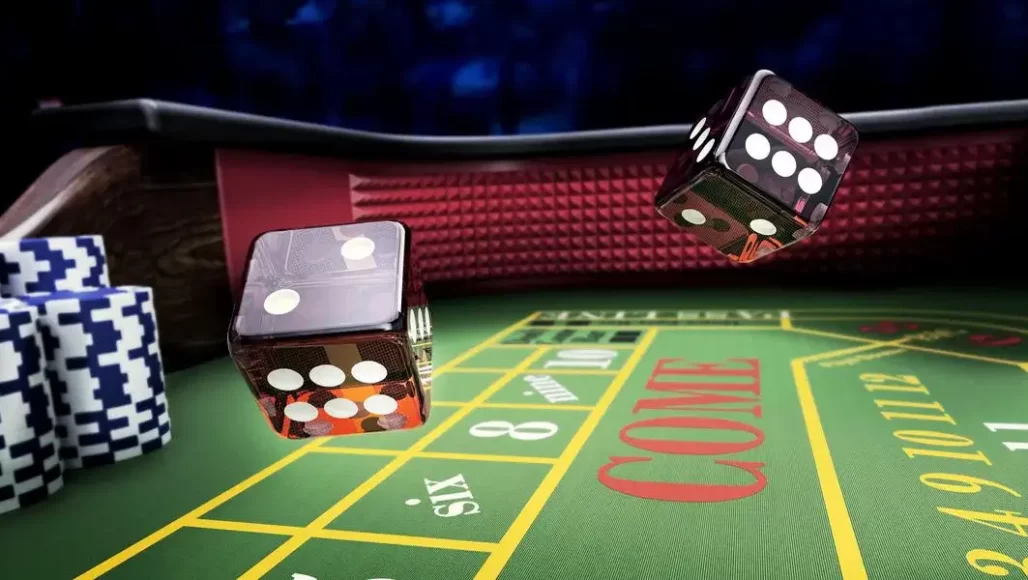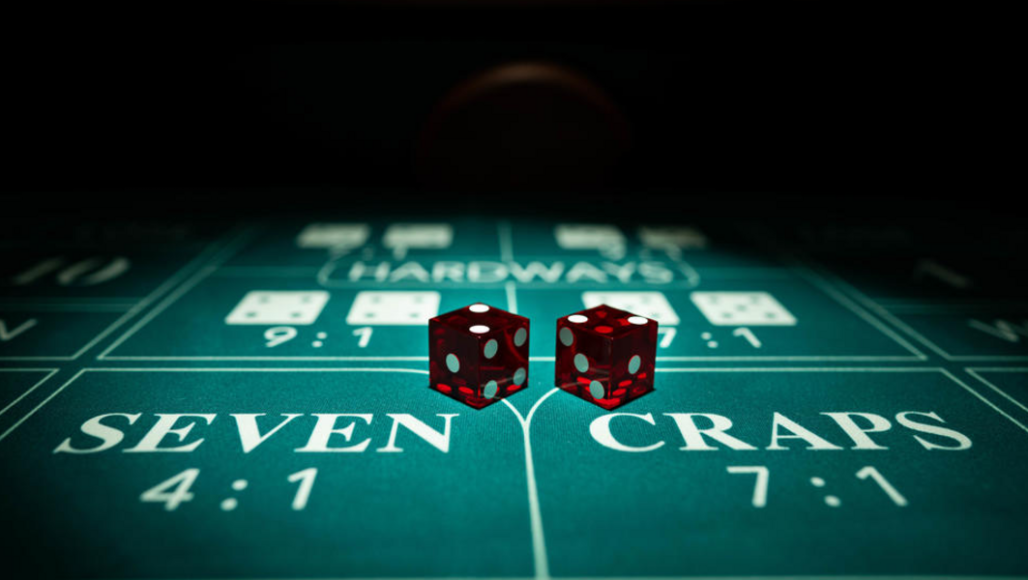Craps Origin: From Ancient Times to Modern Casinos

Craps is one of the most exhilarating and fast-paced games you’ll find in any casino. The clatter of dice, the shouts of players, and the tension around the table create an atmosphere that is uniquely captivating. But how did this game of chance, now ubiquitous in casinos worldwide, come to be? To fully appreciate the game, it is essential to delve into its rich and varied history, exploring who invented craps, its origins, and how it evolved over time.
The Ancient Beginnings of Dice Games
To understand craps’ origin, we must first look at the history of dice games. Dice are among the oldest gaming implements known to man, with archaeological evidence dating back to around 3000 BCE. Ancient civilizations, including the Egyptians, Greeks, and Romans, used dice for various purposes, from fortune-telling to entertainment. Alongside these early dice games, other forms of gambling such as roulette emerged, which also played a significant role in shaping the landscape of gaming. These early forms of dice games laid the foundation for the development of craps.
The Birth of Hazard

The more direct ancestor of craps is the game of Hazard, which emerged in Europe during the Middle Ages. Hazard’s exact origins are somewhat murky, but it is believed to have been invented by Sir William of Tyre during the Crusades in the 12th century. The game gained popularity in England and France, where it was enjoyed by nobility and commoners alike.
Hazard was a complex game with intricate rules and various betting options. Key characteristics of Hazard include:
- Origin: Believed to have been invented by Sir William of Tyre during the 12th century Crusades.
- Popularity: Gained traction in England and France among both nobility and commoners.
- Gameplay: Involved a pair of dice and required players to make wagers on the outcome of their rolls.
- Complexity: Featured intricate rules and various betting options.
- High Stakes: The game’s complexity and the potential for high stakes made it a favorite in European gambling circles.
Understanding these elements of Hazard helps to appreciate its influence on the development of modern craps.
Who Invented Craps? The Transition from Hazard
The transition from Hazard to craps is a significant milestone in the history of dice games. The modern version of craps is generally attributed to Bernard Xavier Philippe de Marigny de Mandeville, a wealthy landowner and gambler from New Orleans. In the early 19th century, de Marigny introduced a simplified version of Hazard to the United States, which he called “crapaud,” the French word for “toad.” This name likely originated from the way players would crouch over the ground to play the game.
Crapaud quickly gained popularity among the local population, particularly among African Americans and Creoles in New Orleans. Over time, the name evolved to “craps,” and the game underwent further simplification, making it more accessible and easier to understand than its European predecessor.
When Was Craps Invented? The Evolution in America

Craps as we know it today began to take shape in the United States during the early 19th century. The game spread rapidly along the Mississippi River, facilitated by riverboat gamblers who introduced it to various port cities. By the mid-1800s, craps had become a staple in American gambling culture.
The game’s popularity continued to grow, particularly during World War II. Soldiers played street craps during their downtime, contributing to the game’s widespread recognition and appeal. This period marked a significant turning point, as craps transitioned from a regional pastime to a national sensation.
Where Did Craps Originate? A Global Phenomenon
While the modern version of craps originated in the United States, its roots can be traced back to various cultures and time periods. From the ancient dice games of Mesopotamia and Egypt to the medieval game of Hazard in Europe, craps is the product of a long and diverse history of gambling.
Today, craps is enjoyed by millions of players worldwide, both in physical casinos and online. Its global popularity is a testament to its enduring appeal and the excitement it offers.
The Rules and Mechanics of Craps
Understanding the basic rules and mechanics of craps is essential for appreciating its history and enduring popularity. The game is typically played on a specially designed table with a pair of dice. The primary objective is for players to bet on the outcome of the roll or a series of rolls.
The game begins with the “come-out roll,” where the shooter (the player rolling the dice) aims to roll a 7 or 11, which results in an immediate win for those who bet on the pass line. Rolling a 2, 3, or 12 results in a loss for pass line bets, known as “crapping out.” Any other number rolled becomes the “point,” and the shooter must roll that number again before rolling a 7 to win.
Craps offers a wide range of betting options beyond the pass line, including the don’t pass line, come and don’t come bets, place bets, and more. This variety of betting choices adds layers of strategy and excitement to the game, making it appealing to both novice and experienced gamblers.
Here is a spreadsheet summarizing the primary betting options in craps:
| Bet Type | Description | Winning Condition |
|---|---|---|
| Pass Line Bet | Bet that the shooter will win on the come-out roll by rolling a 7 or 11, or by making the point. | Rolls a 7 or 11 on the come-out roll or makes the point. |
| Don’t Pass Bet | Bet that the shooter will lose on the come-out roll by rolling a 2, 3, or 12, or by rolling a 7 before making the point. | Rolls a 2, 3, or 12 on the come-out roll or rolls a 7 before making the point. |
| Come Bet | Similar to a Pass Line Bet, but made after the come-out roll. Wins if the shooter rolls a 7 or 11 on the next roll. | Shooter rolls a 7 or 11 on the next roll. |
| Don’t Come Bet | Similar to a Don’t Pass Bet, but made after the come-out roll. Wins if the shooter rolls a 2, 3, or 12 on the next roll. | Shooter rolls a 2, 3, or 12 on the next roll. |
| Place Bet | Bet on a specific number (4, 5, 6, 8, 9, 10) that must be rolled before a 7 to win. | The chosen number is rolled before a 7. |
Understanding these basic bets and their conditions can significantly enhance your craps experience, allowing you to engage more deeply with the game and appreciate its nuances.
The Social Aspect of Craps

One of the most compelling aspects of craps is its social nature. Unlike many other casino games, craps is highly interactive, with players often rooting for the shooter and engaging in collective excitement. The communal atmosphere around the craps table is a significant part of its allure, fostering camaraderie and a sense of shared experience among players.
Conclusion: Craps’ Timeless Appeal
The history of craps is a fascinating journey through time and culture. From its ancient origins to its modern incarnation, craps has evolved and adapted, yet it has always retained its core elements of chance and excitement. Whether you’re a seasoned player or a curious newcomer, understanding the rich history of craps enhances the appreciation of this classic game.
In conclusion, craps’ journey from ancient dice games to the bustling casino floors of today is a testament to its timeless appeal. As you roll the dice and feel the adrenaline surge, remember that you are participating in a tradition that spans millennia and crosses continents. The next time you find yourself at a craps table, you’ll know exactly where it all began and appreciate the game even more.
FAQ
The name “craps” is believed to have evolved from the French word “crapaud,” meaning “toad.” This term likely referred to the way players would crouch over the ground to play the game. Over time, “crapaud” evolved into “craps.”
Craps spread rapidly along the Mississippi River in the early 19th century, facilitated by riverboat gamblers. It gained further popularity during World War II, as soldiers played street craps during their downtime, making it a national sensation.
While both games involve betting on the outcome of dice rolls, Hazard is more complex with intricate rules and various betting options. Craps, on the other hand, has been simplified to make it more accessible and easier to understand.
During World War II, soldiers played street craps during their downtime. This helped spread the game’s popularity across the United States and contributed to its status as a beloved national pastime.
Craps offers a variety of betting options, including the pass line bet, don’t pass line bet, come bet, don’t come bet, and place bets. Each bet has different winning conditions and strategies, adding depth and excitement to the game.
Craps is highly interactive and encourages player participation. The communal atmosphere around the craps table, with players often cheering for the shooter, fosters camaraderie and a shared sense of excitement.
The advent of online gambling has made craps more accessible to a global audience. Online platforms offer various versions of the game, allowing players to enjoy craps from the comfort of their homes, contributing to its continued popularity.